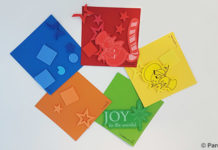Age
For 18 month to 3 year olds.
Duration of activity
This activity can last for 15 minutes or longer
Materials/equipment
- Complete the rain cloud drawing printable
- Colouring pens/pencils/crayons
Cost
The cost of this activity should be minimal as most of these materials you would already have at home.
Preparation
- Print out the complete the rain cloud drawing template.
- As there are two rain cloud drawing activities to complete per A4 sheet, cut the page in half or fold over, so your child can concentrate on one at a time.
What to do
The first three drawings are rain clouds that need to be completed by drawing rain drops underneath. Tell your child to complete each rain cloud drawing. The instructions for each drawing are above each picture. There is also an example of how the different types of rain drops should look to start them off is on each page.
- As your child completes the first activity, discuss raining and what type of raindrops fall from clouds on a rainy day. Your child draws raindrops.
- In the second activity your child should draw smaller raindrops to show that it is raining only lightly or drizzling. Talk to your child about the type of raindrops that fall from the sky when it is drizzling and instruct them to draw little raindrops under the cloud to show drizzle.
- The cloud in activity three is a storm cloud. Discuss the pouring rain that fall during a storm and instruct your child to draw big heavy raindrops under the storm cloud.
In the next two activities your child need to select the most appropriate clothes for boys and girls to wear out when it is raining.
- Talk to your child about the different types of clothes people wear in different types of weather. Tell your child that Amy needs to go out in the rain and instruct them to point to the picture appropriate wet weather clothing for Amy.
- Choose the appropriate wet weather clothing for Tom.
Extension activities
- Incorporate music and movement into your activity:
- Ask them what the rain sounds like when it is pouring with rain compared to when it is just drizzling. You can mimic the sound of heavy or light rain by shaking maracas forcefully or gently (a sealed plastic jar with a bit of macaroni or rice inside makes a great maraca if you don’t already have on in the house). Ask your child to mimic the sound in the drawing. Make a game out of this by instructing your child to change the music as you point to different pictures showing heavier and lighter rain. For example, here comes the sun, it’s just drizzling now, but uh-oh here comes a big rain cloud and it’s pouring with rain.
- Repeat the above by stamping feet or clapping hands. You can also introduce the idea of stages here. Talk to your child about how rain often begins as a drizzle, then gets heavier and then becomes lighter again. To begin tell your child it is raining lightly and tap the tips of your toes gently on the floor. Talk about the rain getting heavier and increase the speed and noise you make by stamping your feet as it becomes yet even heavier.
- Incorporate song and hand actions into your activity:
- Sing the popular rain song and use your fingers to demonstrate raindrops coming down.
Rain is falling down Rain is falling down Pitta patta pitta patta Rain is falling down.
- Sing the song faster and wriggle your fingers faster as the rain becomes heavier. In between repetitions of the song say (rain’s getting heavier, even heavier now, it’s pouring with rain!)
- If you don’t know the tune to this song, just make one up that is catchy.
- Incorporate size into your activity.
- Draw the sizes of the little puddles produced by drizzling compared to the big puddles produced by heavy rain.
- Include discussion of clothing and colours with your child.

- Discuss the name of each item of clothing.
- Why do they wear proper wet weather clothes? To stay warm and dry.
- Ask what would happen if they wore the other clothes rather than the proper wet weather ones? They would get wet-through and be cold.
- Ask your child to be creative and ask what colour clothes Amy/Tom are wearing.
- Repeat this activity as often as your child is interested. By doing the activity over and over again, you’re allowing your child a chance to understand the concepts involved. Young children enjoy repetition as it gives them a chance to master new skills. Each time your child does the activity they will build on what they have learnt the time before.
- If you speak a second language with your child, complete the activity in another language.
Educational outcomes
Fine motor skills
Drawing the raindrops will help your child develop their fine motor skills. They will learn how to grip a pencil correctly, strengthen the fine muscles in their fingers that allow them to manipulate the pencil and improve their hand-eye coordination.
Mathematical skills
Talking about the different types of rain (heavy and light) and the size of rain drops will help your child develop an understanding of mathematical concepts like size and measurement. They will also learn about patterns and colours when colouring the children’s wet weather clothes and these are important early mathematical concetps for children to grasp.
Language skills
As your child completes the activity and talks about the rain clouds, rain and clothing, they’ll also be developing their language skills and vocabulary. For example, they will learn new words and get practice responding to questions. This will help them learn about how pictures and words go together.
Social and emotional development
Children develop socially and emotionally every day. Talking to your children about rain as well as the clothes people wear when it is raining and how rain makes us feel will increase their understanding of the world and people around them. Completing the activities, for example choosing which clothes are most appropriate to wear out in the rain will help them develop problem solving skills and colouring the clothes and drawing the rain drops will provide an opportunity for them to express and develop their creativity.
Download the worksheet for this activity
References
- Virginia Early Childhood Development Alignment Program. Milestones of child development- A guide to young children’s learning and development from birth to kindergarten. 2009. (cited 26 July 2013). Available from (URL link)
- Asheden A. Continuity of learning. Newletter 46. National Quality Standard Professional Learning Program. 2012. (cited 20 August 2013) Available from: (URL Link)
- South Australian Curriculum Standards and Accountability. Learners and learning in the early years. No Date. (Cited 20 August 2013), Available from: (URL Link)



 (10 votes, average: 4.60 out of 5)
(10 votes, average: 4.60 out of 5) 






